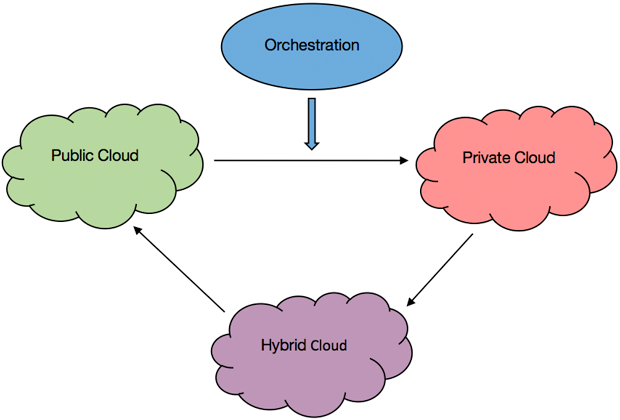Learn the basics, and compare and contrast the various tools available
Cloud orchestration is the end-to-end automation of the deployment of services in a cloud environment. More specifically, it is the automated arrangement, coordination, and management of complex computer systems, middleware, and services—all of which helps to accelerate the delivery of IT services while reducing costs. It is used to manage cloud infrastructure, which supplies and assigns required cloud resources to the customer like the creation of VMs, allocation of storage capacity, management of network resources, and granting access to cloud software. By using the appropriate orchestration mechanisms, users can deploy and start using services on servers or on any cloud platforms.
There are three aspects to cloud orchestration:
- Resource orchestration, where resources are allocated
- Workload orchestration, where workloads are shared between the resources
- Service orchestration, where services are deployed on servers or cloud environments
Figure illustrates how cloud orchestration automates the services in all types of clouds—public, private, and hybrid.
Many people think that orchestration and automation are the same thing, but orchestration is actually more complex. Automation usually focuses on a single task, while orchestration deals with the end-to-end process, including management of all related services, taking care of high availability (HA), post deployment, failure recovery, scaling, and more. Automation is usually discussed in the context of specific tasks, whereas orchestration refers to the automation of processes and workflows. Basically, orchestration automates the automation—specifically, the order that tasks take place across specific machines, especially where there are diverse dependencies.
Using an orchestrator tool, it’s easy to quickly configure, provision, deploy, and develop environments, integrate service management, monitoring, backup, and security services—and all of these steps are repeatable.
Another advantage to orchestration is that it enables you to make your products available on a wider variety of cloud environments, which enables users to deploy them more easily. As a result, you can increase your products’ exposure to a wider audience, and potentially expand revenue opportunities for your company.
For details check here
https://developer.ibm.com/technologies/paas/articles/cl-cloud-orchestration-technologies-trs/

